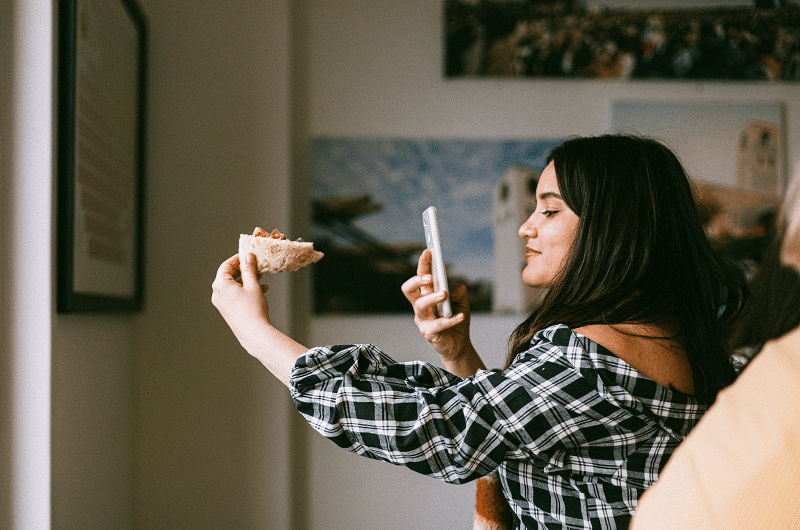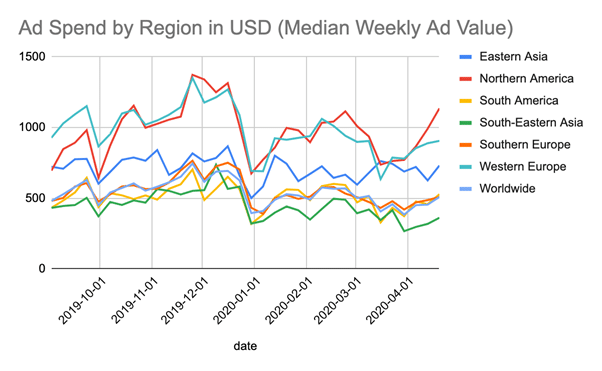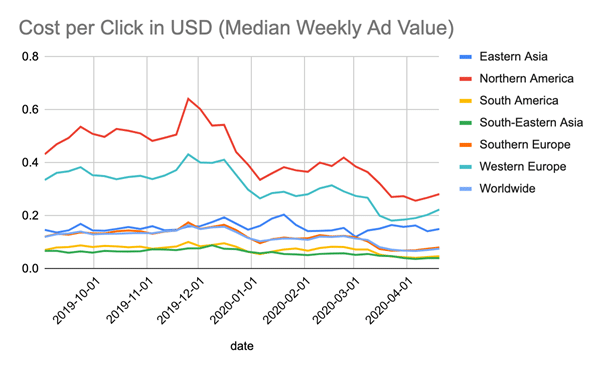
The report, from social media marketing platform Socialbakers, found that UK posts using #ad were down 35% versus last quarter. However, social media usage has risen 13% on Friday nights and 15% on Saturday nights, the data indicates.
Key findings include:
• Influencer #ad posts dropped significantly: in the UK, the number of posts using #ad showed a decline of 35% vs. last quarter, likely due to marketing budget cuts
• We’re in this together: audiences favour authenticity and connection of ‘real-life’ influencers over celeb counterparts
• The UK still flocks to Facebook: Instagram is still the platform for engagement, but while their global audience is 28% greater than Facebook, but in the UK they are on par – interactions on Instagram are 16x higher globally, but only 7x higher in the UK
• Social usage skyrockets: In March, Europeans spent more time on Facebook every waking hour than previous months, with peaks increasing 13% on Friday nights and 15% on Saturday nights
The report shows an increase in audience engagement with influencers who post content that reflects a relatable ‘human touch’, as opposed to aspirational or overly curated content. The report also shows a significant increase in the amount of time people are spending online during the global pandemic, and a decline in advertising cost-per-click (CPC) in regions affected by COVID-19.


“During the pandemic we have seen just how important social media is as the go-to place for consumers to discover content,” said Yuval Ben-Itzhak, CEO, Socialbakers. “People have been spending more time on social media consuming content, and at the same time brands have been forced to hold their budgets in response to the economic uncertainty. These behaviours have opened a unique window of opportunity for savvy brands to stay close to their customers, while increasing their reach and engagement at a lower cost.”
Influencer marketing sees a transition as ‘real-world’ content engagement increases
In a shift that is likely tied to the worldwide pandemic, the number of influencers using #ad and other sponsored hashtags declined significantly in 2020. In March, 11,341 Instagram influencers associated with Brands used #ad, which was the lowest number since August 2019. In the UK, 4,252 influencer posts used #ad, a decline of 35% compared to the previous quarter, and a decline of 15% compared to Q1 last year. Another shift is the absence of celebrities among the list of top influencers. “At the moment, the best-performing influencers are more likely to be authentic ‘everyday’ influencers,” said Ben-Itzhak. “Audiences are looking for and engaging with more relatable, real-life content, rather than aspirational and manicured posts – perhaps because they offer the sense that ‘we are all in this together.’”
Instagram’s audience engagement continue to grow
One trend that carries on despite the pandemic is the continuing rise of Instagram. Globally Instagram’s total audience size is now 28% larger than the audience for the top 50 biggest brand profiles on Facebook. In the UK, this is quite a different story, with the audience size for the top 50 biggest profiles on both platforms being almost the same – suggesting that Facebook is still going strong in the UK. Despite this, Instagram is stronger in engagement, with total interactions more than 7x higher than on Facebook. Yet, brands still posted more content on Facebook – almost 60% of brand posts from the 50 biggest profiles across both platforms were on Facebook.
Audiences spend more time online
With the practice of social distancing amid the global pandemic, people are spending more time online. For example, fans of Facebook Brand pages in Europe spent more time online in March every day of the week, and every waking hour, compared to previous months. The peak time for online activity was 8 p.m. and the difference was most striking on weekend nights, when people would usually be out of the house. Comparing February to March, the peak usage time increased 13.2% on Friday nights and 14.8% on Saturday nights.
Opportunity for brands to gain greater reach with sponsored content
Of the six regions measured by Socialbakers, five saw a decline in CPC during March, as the pandemic really hit. This decline in ad costs ranged from 22.1% in Southeast Asia to 42.4% in Southern Europe. While the overall reach for brand pages on Facebook went down starting in mid-March, brands that promoted their posts, taking advantage of the lower ad costs, saw a 28.6% increase in page reach from March 13-April 13.
Ad spend and Cost per Click rise in East Asia
Looking at six regions globally, all showed the expected annual decrease in ad spend around the holidays. However, after some increases in the new year, most decreased back down to the holiday level in Q1 or even lower because of the pandemic. One exception is East Asia, where business is resuming. In that region, ad spend increased by 12.7% since the beginning of March. East Asia also saw CPC increase by 30.7% during the last month, returning to fall 2019 levels. This suggests that as other regions get the coronavirus under control, their ad spend will also bounce back, which we saw in recent data from late April, as CPC and ad spend started to rise once again in the USA and Western Europe. See below data for more on this.
The Socialbakers’ Social Media Trends Report Q1 2020 is now available for download.
